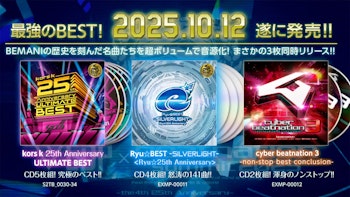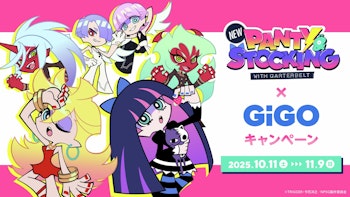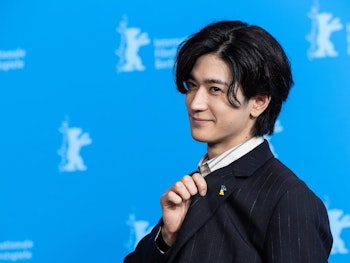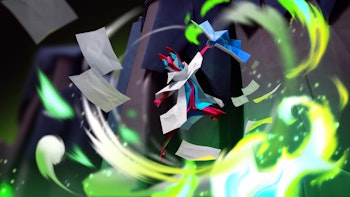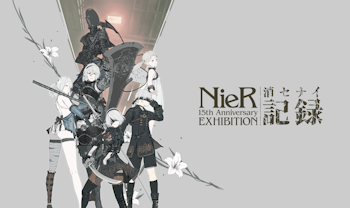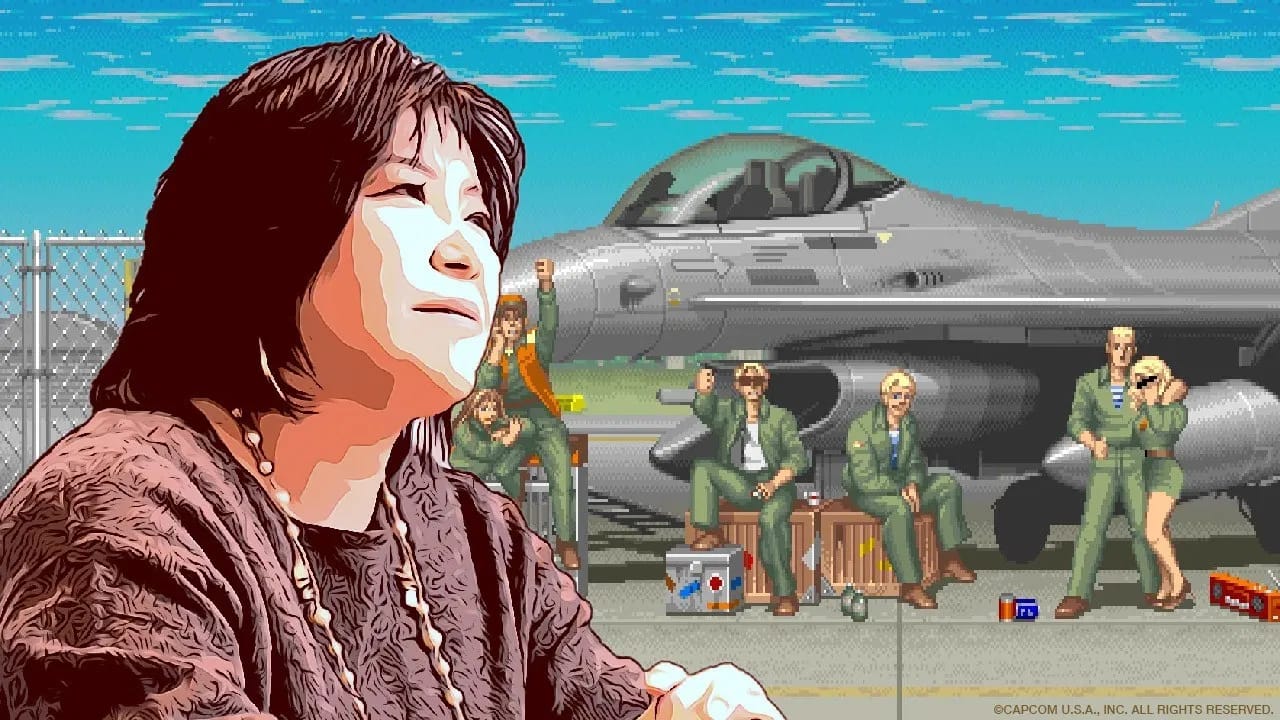
In the world of video game music, few composers are as celebrated worldwide as Yoko Shimomura. Being involved in the industry since the late 1980's she has created music for more than 50 individual titles, and composed some of the most memorable music to ever appear in a video game.
Although many fans may recognize her as a composer who works primarily on role-playing titles due to her classical background and the prolific amount of work she's done in the genre, we think it's fair to say that one of the most iconic bodies of work she's done was that of Street Fighter II, which she composed nearly the entire soundtrack for herself. Renditions of those songs are still used in the franchise to this day, and are among the most recognizable pieces of video game ever created.
We had the immense pleasure to sit down with Ms. Shimomura and discuss the creation of this soundtrack, hear some stories related to the creation of specific songs, and get insight on what it was work on music for games during the early 1990's.

OTAQUEST: When you were first assigned the role of composer for Street Fighter II, what was in your mind as you started writing music for it?
Yoko Shimomura: First I confirmed the homelands of each character before setting out to write “cool music” for them. Given my classical background, I wasn’t prepared to create music focused on rhythm, and I didn’t have the confidence that comes from experience, either. So I kept looking for ways I could express the “Street Fighter” world, and that’s how we ended up with those theme songs. I brought along some demos and the programmer for Guile, Motohide Eshiro said “this song’s cool, I’m taking it for Guile!” Things were pretty laid back in that age.
OTAQUEST: Mr. Eshiro is still a team member at Capcom, and he still talks about his work on Street Fighter II. He’s revealed stories like how the company held a contest for voicing the “hadouken!” shout, which went to the character designer of Guile, and how despite his status as a programmer, his affection for Guile drove him to mess with Guile’s hitbox, landing him in hot water with the director.
Yoko Shimomura: Yes, all the Japanese lines and cheers from the audience were voiced by Capcom employees. I had to wonder if some of their decisions made sense. (laughs) As for the hitboxes, Akira Nishitani once passionately regaled me with a story about how changing a single pixel can overturn game balance. I didn’t offer much more than “I see…” in response, as this was back when my first batch of sound effects had all been rejected. Nishitani asked me, “Don’t you know how good it feels to punch someone?!” (laughs) But, it was a real pleasure to have the people programming each character choose the song I made for Guile. I still didn’t have much experience, and I feel that that helped me gain confidence in myself.
OTAQUEST: You mentioned that you weren’t very good at songs focused on rhythm, but now you’re praised for your fierce melodies. Have any comments on that?
Yoko Shimomura: Ken’s theme was a stereotypical 8-bit chiptune, but the themes for Guile and Ryu were 16-bit. Back then, I didn’t give much consideration for what was 8-bit and what was 16-bit, I just wrote what felt right as a melody. Since then, I’ve gone on to write a lot of battle BGM with layers and layers of detailed sound. That might be why you say that. It’s true, I do enjoy writing finely detailed rhythm. I’ve always tried to make things exciting, like hiding rhythm in the vague gaps between tones.
OTAQUEST: On the flip side, what are some instances in your game music writing career where classical experience came to the forefront?
Yoko Shimomura: Music programming is an unpleasant sort of command execution. Classical music supplies us with certain taboos to uphold. When you take apart a melody that doesn’t feel right, it’s often those taboos that help you figure out what went wrong. It’s my classical upbringing that enables that. Still, I did a lot of things you’d never hear in classical music. One thing that’s often brought up is how in Ryu’s theme, there’s a “do ti la so fa fa mi mi” portion that begins with a low “do” before a high “ti.” It would be unthinkable in classical music, and that’s why the music arranger changed the direction of the scale, thinking it was a mistake.
OTAQUEST: Did you intentionally write it that way?
Yoko Shimomura: No. When I write music, I don’t give much thought to theory. I often get asked about what I’m thinking about when I write music, and I can only say “I’m not thinking about anything.” (laughs)
OTAQUEST: So you just jumped into the world of Street Fighter with an idea of a character, and that’s the melody that came out of your head?
Yoko Shimomura: That’s about right. I hear it faintly in my head, and writing out that data, we get melodies like those.
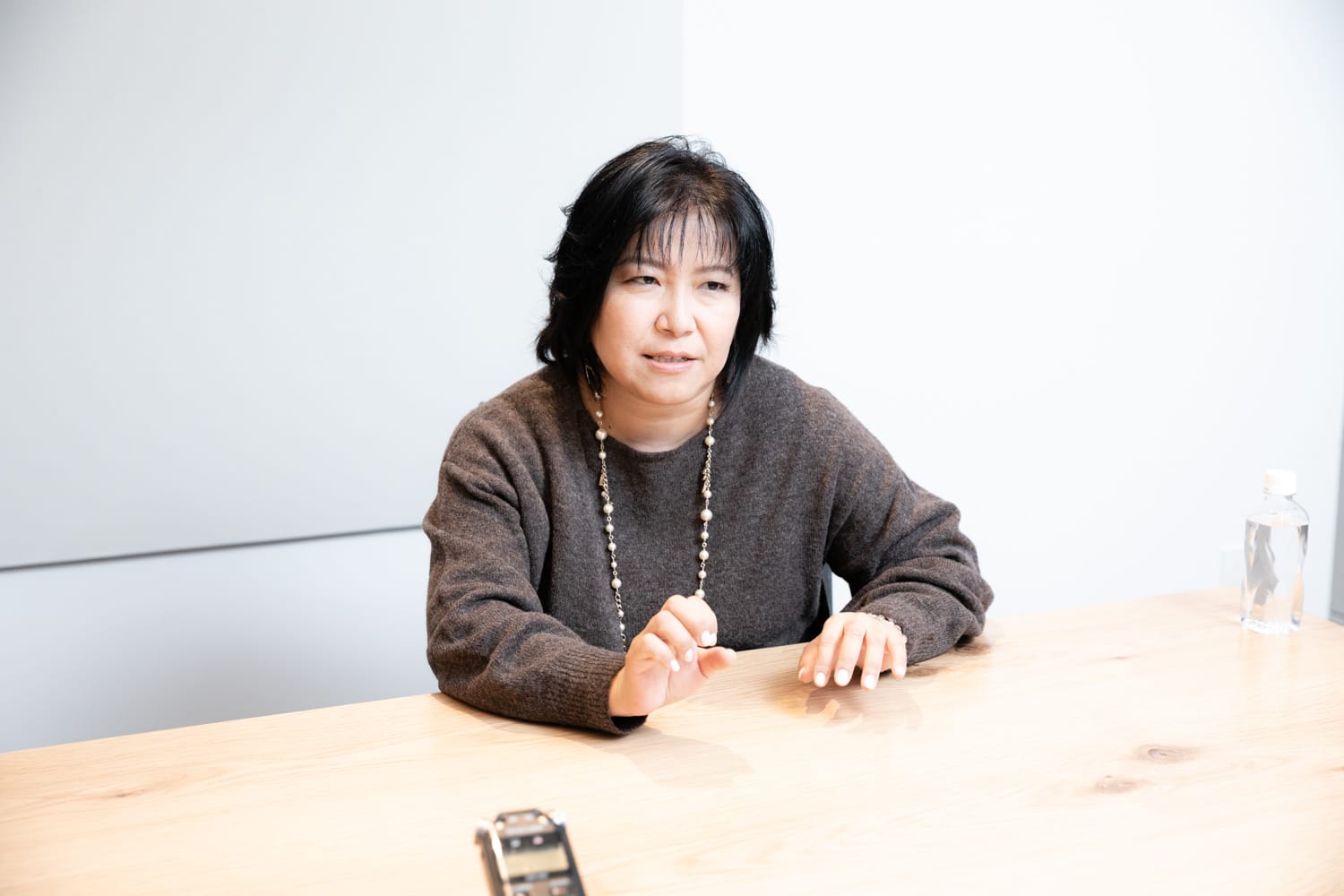
OTAQUEST: I imagine you read character backgrounds and overviews and other documents to create the music for Street Fighter II. What kind of documents were most useful to you?
Yoko Shimomura: The background art was important. Each background gives an impression of the country they depict, and I asked at the beginning to include a unique sound effect for each individual stage. I was in charge of the sound effects, too. For instance, Chun-Li’s stage has a marketplace in the background where there is a sound from a bicycle. Dhalsim’s stage, as you may well know, has the trumpet of an elephant. My hope was that it would be all you’d need to conjure up an image of Dhalsim, and the other sound effects were similar in intent. I also wanted the music to blend naturally into the world of the game. Rather than writing for individual characters, I felt that writing music that matched the stage backgrounds would naturally become themes for the characters.
OTAQUEST: Come to think of it, Guile’s theme was also used as stage BGM.
Yoko Shimomura: To take Chun-Li as an example, she could have had an idol pop sort of tune. But by matching it to the stage, the theme took on a Chinese feeling. However, I felt that by matching it more to the bustle of the marketplace rather than China’s grandeur, it took on a cute quality that matched Chun-Li. It’s like interaction.
OTAQUEST: Has that approach helped you with work on other games?
Yoko Shimomura: It has. In any project, it’s hard to immediately come up with a theme that matches a character. I have to imagine more of the character’s psyche… Like, this person broods over a past event, or this person, in spite of their appearance, is an impulsive rascal… And so on. (laughs) That’s not to say I make up details about characters that aren’t true. People might ask you to write a theme symbolizing the class of “warrior” for an RPG, but even in RPGs, there are all kinds of warriors. That’s why I have to imagine what a “warrior” would be in its given game world or plot. A darker plot would call for a warrior theme with weight to it.
OTAQUEST: What was the theme you struggled with most in Street Fighter II?
Yoko Shimomura: That would be Blanka’s theme. Many of us would imagine samba when it comes to Brazil, but Blanka’s stage is in the depths of the Amazon, and Blanka himself is more beast than human. Like, “look at him rolling around!” (laughs)
OTAQUEST: (laughs) Then there’s that crackling of electricity from his Electric Thunder.
Yoko Shimomura: That sound effect took forever to decide upon. It was difficult to figure Blanka out. Given the Amazon setting, it was easy to come up with traits like “aboriginal,” but not the melody.
OTAQUEST: Can I ask about what you used to compose back then?
Yoko Shimomura: Probably a PC98. Macs were out of reach for us back then. There were advertisements for “sixty-payment loans for men” back then, and I had to think “well what about women!” (laughs) I had a 49 or 61-key keyboard connected to a computer, and that’s how I recorded data.

OTAQUEST: Did you start composing with a PC after joining Capcom?
Yoko Shimomura: Of course. I didn’t know you could write music with a computer until I joined the company. At the entrance exam, I was asked “what sequencer do you use?” and I had to ask back “What? Is that like an electronic controller?” (laughs) They had to teach me from the ground up, and after that it was less musical practice than it was technical. The first music data I turned in was thoroughly corrected, and I was feeling really glum.
OTAQUEST: Back then, everything was made with frequency modulation.
Yoko Shimomura: Right. I was asked to talk about what I knew about FM generation at the entrance exam. I had no idea what it was, so I thought about AM/FM radio and wrote down “it sounds better these days than it used to.” (laughs)
OTAQUEST: Considering the constraints of generating music through frequency modulation, it must have been hard.
Yoko Shimomura: It sure was. FM generation can get you the sound of electric pianos, but it’s hard work to reproduce the sounds of a normal piano or stringed instruments like guitars and even electric guitars, I was sampling it, but the sound became too distorted. Drums, at least, had the ADPCM system, so we had percussion recordings we could play back, but the melody was FM generated. Thinking back, it really was easy to mess up. We had to tinker with everything so that the volume was right, or so that things sounded natural. Still, the composers from before us created music that sounds truly rich. I thought we’d never compare. For instance, Manami Matsumae (Rockman/Mega Man on the NES, Senjō no Ōkami II/MERCS in arcades) is incredibly talented. I’d ask her about a kind of sound I’m after, and she’d tell me about techniques I could never have imagined. I was astonished how a single parameter could change the sound utterly. I’d put her advice to use with all my sounds and study her modulations.
OTAQUEST: Guile’s theme has gathered popularity with a certain video meme, “Guile’s Theme Goes with Everything.” Have you seen it?
Yoko Shimomura: No, I hadn’t seen the videos until you told me about them, but it’s remarkable, isn’t it. What’s all this with falling off a cliff or dancing around? (laughs) Also, I love the acapella video with the man singing all the tracks. The one with the cat in it. I really enjoyed it, when the fans first shared it with me I thought to tweet a link to it, but I held off because it wasn’t the original video.
OTAQUEST: Did you give any thought to why Guile’s theme is so loved?
Yoko Shimomura: All I can say is that I’m terribly grateful. (laughs) I’m too scared to analyze my own music. But one thing I’m often told about Guile’s theme involves its intro, and how it’s six measures. Music is often made up of an even number of measures, and so long as there aren’t any breaks, they can often be broken down into four-measure segments. But Guile’s theme repeats two measures plus one twice, so many find it striking, I think. Not that I had any intention of writing something unnatural. Those three measures were the first thing that came to me. Looking back on it, I do think the odd-numbered sequence is a rare thing. The inspiration of youth. (laughs)
OTAQUEST: Fans consider your songs to be particularly easy to hum. Was any consideration to that given?
Yoko Shimomura: Songs that capture my heart I measure in overall feeling, but I pay a lot of attention to the melody, so it makes sense that I would put emphasis on my own melodies. Still, I have written songs meant to be sung for games, and yet I’ve been told they’re difficult to sing. I guess that’s what happens when the melodies best work on instruments. I don’t sing, personally, although I do hum tunes that I’m composing. Also, my songs have always been rather short. Game music is looped, so I always felt that something on the shorter side was harder to get tired of and that preference might be affecting me unconsciously. Some of my songs just build and build to a bridge, only to end with an eight-bar conclusion. In both game music and pop music, alternate melodies help to create memorable music but to bridge one last time before 16 measures of conclusion feels needlessly long to me. That might be one reason my people think my music is hard to grow tired of.
OTAQUEST: That sounds like the three-measure intro in Guile’s theme. How do you feel about your composing, looking backward?
Yoko Shimomura: There was no internet back then, and I had never gone anywhere outside of Japan. My world was still small. Yet somehow I was able to make music matched to fictional game worlds. Plus, I had never really had the opportunity to produce anything focused on rhythm. I have to pat myself on the back for effort.
OTAQUEST: How do you feel about yourself as a composer of game music? As a composer whose talent brought about music loved worldwide?
Yoko Shimomura: I don’t see it that way. As I always say, it just doesn’t register with me, or it’s like a dream. I had always wanted a job involved with music, but I was painfully aware of my lack of skill as a performer, so I had only hoped to work in music publishing or a corner of the music industry. At my college, three game companies were recruiting, and Capcom was one of them. I can only feel apologetic for having the dumb luck to score a job making music, especially since my half-baked impressions were things like “you can make it if you try” and “sound creator sounds like a cool occupation.” (laughs) I never could have imagined that my own songs would be listened to worldwide, or that they could be featured in concerts.
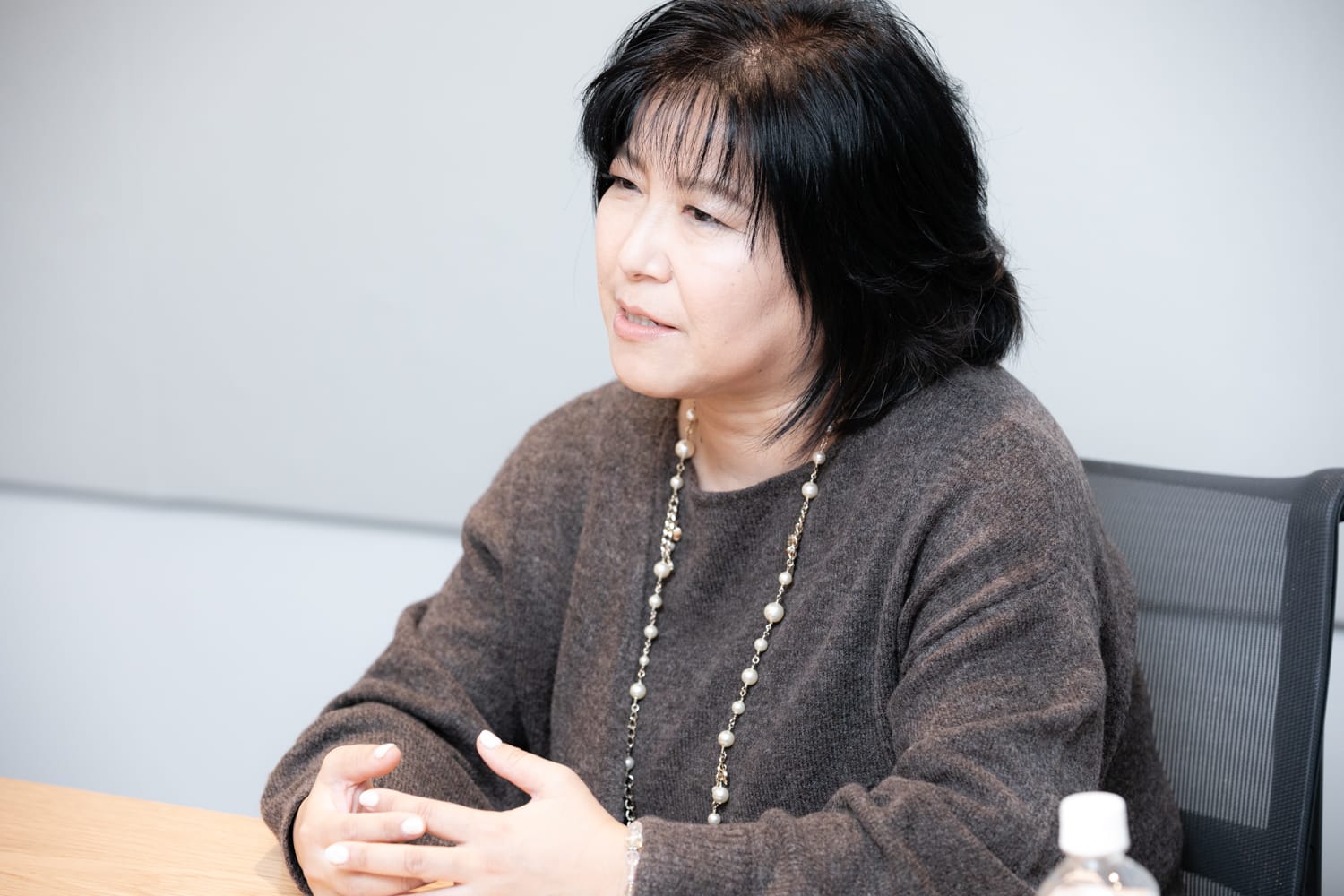
OTAQUEST: Recently, you traveled the world with the “KINGDOM HEARTS Orchestra: World of Tres” concert.
Yoko Shimomura: At the concert meet and greets, young people with tears in their eyes would come to shake my hand. That got me crying, which created these weird, sorrowful scenes. (laughs) And yet I still have to wonder if my songs are really sufficient. Like I’m in a dream, and I’m just trying to stay asleep. It’s a blissful thing to be able to continue doing what you enjoy doing, but it’s painful to have it as a job, too. I often doubted I could do it. I can only say that it really must be the job for me, since I was somehow able to keep myself moving forward, and I really do enjoy music. Yet I still lack confidence. I never know if what I compose will be accepted, and I panic about it every time. Like my life depends on the music being used.
OTAQUEST: Makes sense, since you write music you like personally.
Yoko Shimomura: That’s right. It was like “if this doesn’t work, that’s it, I’m out. I won’t meet the schedule, the ROM won’t get made, and the release will be delayed.” (laughs) That’s why the periods before deadlines tend to be stressful for me. But even after ten hours of composing, once the music starts flowing, I can work on it without sleeping, eating, or bathroom breaks. That might be a talent. Also, even though I never focus on the theory of my music, I’m often told “I can tell how you thought this through.” So apparently I have the ability to convince people that I’m thinking about the music more than I actually do. (laughs)
OTAQUEST: That must be the god of music smiling upon you for your love of the art. What gives you your ideas?
Yoko Shimomura: I’m not sure. Anyway, could you get back to the flattery? It’s what helps me work hard. When I’m feeling down, I’m often tempted to tweet “My song didn’t make the grade, somebody praise me please.” (laughs) But I don’t want to let fans down with such sob stories, so I grit my teeth and bear it.
OTAQUEST: Your music has always brought us joy, and I think it’s time for us to return the favor.
Yoko Shimomura: You think so? That makes me happy. I guess it’s worth a try. “Here’s a Christmas present I’d like from everyone. Find your favorite one of my songs and praise the heck out of it.” (laughs) I’m the type that draws strength from praise.

This interview was originally published to OTAQUEST on December 26, 2019 as part of a month-long feature focused on the Street Fighter franchise, with support from Capcom Japan.
